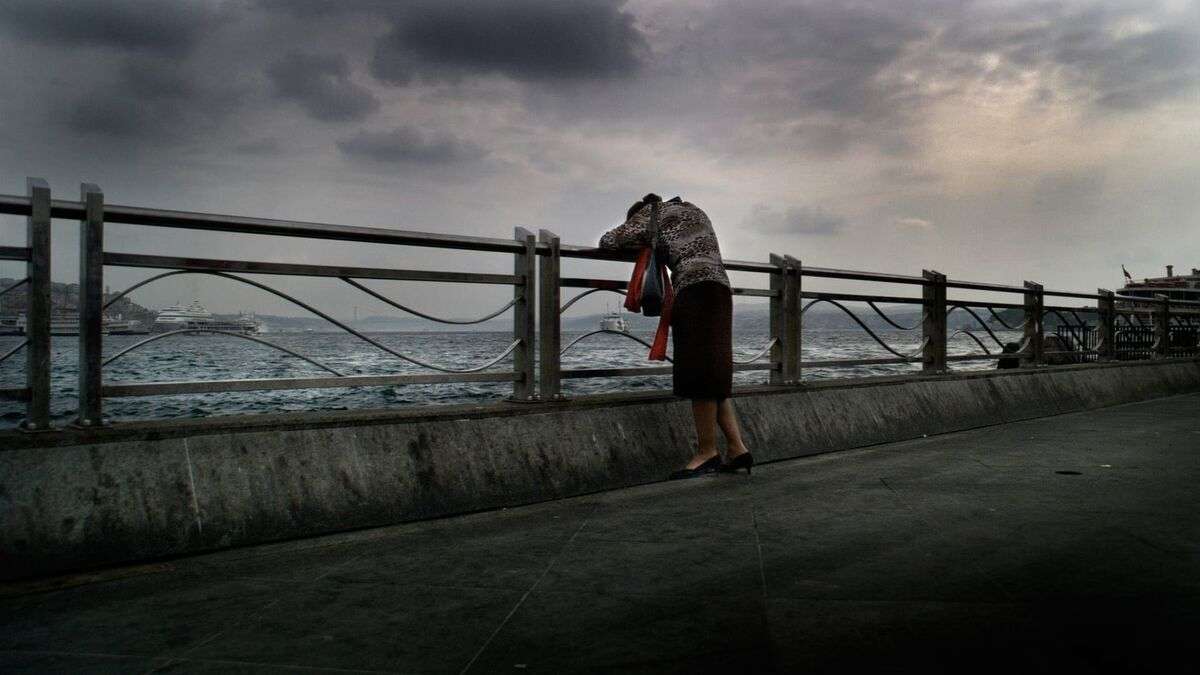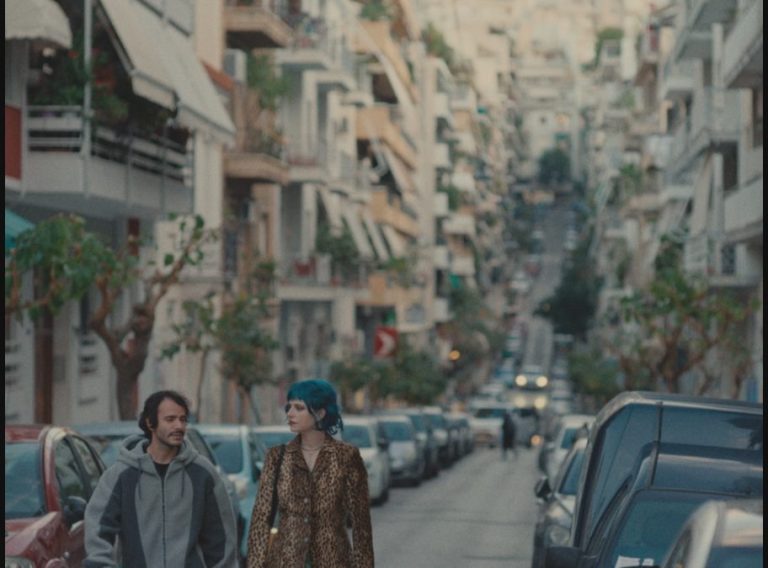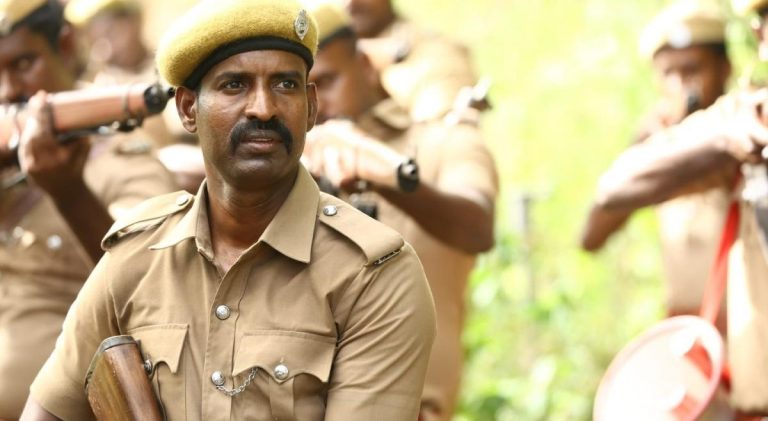Nuri Bilge Ceylan’s “Three Monkeys” (Üç Maymun, 2008) opens with a striking close-up of Servet driving on a rainy night. His tiredness and exhaustion are evident on his face. Struggling to stay awake, he runs over a pedestrian. In the following scene, another car pulls over. As the driver starts to investigate the motionless body on the street, a voice from the passenger seat advises against getting involved and instead suggests noting down Servet’s car number. Once the car drives away, Servet slowly emerges from the shadows, visibly fearful and shocked, before entering his car and driving off.
We soon learn that Servet, an influential and ambitious politician, convinces his driver, Eyup, to take the blame for the accident. Servet promises Eyup a lump sum payment upon his release (which he predicts will be within six months to a year) and assures him that his son will continue receiving his salary during his absence. But what about the internal punishment Servet must bear for his crime? And what are the consequences of Eyup’s pact with the devil? These are the questions Ceylan seeks to explore.
From this powerful opening, director Nuri Bilge Ceylan establishes the film’s overarching theme. The ancient proverb, “See no evil, hear no evil, speak no evil,” is vividly portrayed. Servet, despite committing the crime, is focused solely on saving himself. The passengers in the other car are too wary to intervene in the hit-and-run incident. Eyup agrees to take responsibility for his boss’s crime to secure his family’s future. None of these characters show empathy for the incident or its aftermath; instead, they act selfishly to maintain their banal existences.
While Eyup is imprisoned, his son Ismail persuades his mother, Hacer, to request an advance on the promised lump sum. When she approaches Servet for help, he seduces her, leading to an affair. Despite the potential damage to her familial relationships, Hacer finds a newfound affection for Servet—another act of self-centeredness. She has never received love from Eyup, and perhaps for the first time, she sees a glimmer of hope in her life through this affair.

Ismail, on the other hand, is a disappointment in Eyup’s eyes, and his relationship with Hacer is purely transactional. Eyup, grieving over the loss of his deceased child, remains emotionally detached from both Hacer and Ismail. This familial dysfunction creates a void that draws them further into Servet’s manipulative web. While Servet brings the family together in a twisted sense in the end, it comes at a great cost—tearing apart their morality.
Ceylan masterfully portrays this complex family dynamic by utilizing the apartment where they live as a key narrative element. The space is cramped and claustrophobic, and intimacy is notably absent among the characters. In essence, they don’t truly live in this space; they merely inhabit it. As Marc Augé suggests in his concept of “supermodernity,” the home becomes a “transit place,” and its occupants, “transit people,” lose their identities, leaving only transactional remnants behind.
Also Read: Relationships in a Small Town in Nuri Bilge Ceylan’s ‘Kasaba’ and ‘Clouds of May’
Within the house, each character defines their own spatial boundaries, further emphasizing their detachment. For instance, the doorway to Ismail’s room acts as a boundary that neither Eyup nor Hacer crosses, and Ismail similarly avoids their bedroom. This is starkly evident in the scene where Servet and Hacer share an intimate moment in Hacer’s room—Ismail, unable to enter, resorts to voyeurism, peeking through the keyhole.
The theme of “transit places” and “transit people” extends beyond the apartment and the family to external locations and other characters. One poignant example is Bayram, a poor tea-house worker in the neighborhood, who sleeps at his workplace because he has nowhere else to go. His interactions with customers are purely transactional, serving them tea and doing the chores.
Even, for Servet the relationship with the family is purely transactional. He gives money to shut the mouth of Eyup and gets involved with Hacer only for pleasure. And as Eyup comes out of prison and his business is done, he doesn’t hesitate to end his relationship with Hacer. This reinforces Ceylan’s broader commentary on the modern world’s dehumanizing nature, where everything goes by the means of give and take.

“Three Monkeys” captures these transactional relationships with undertones of thriller and horror, highlighting the detachment and lack of empathy in contemporary society. For Ceylan, these interactions degrade humanity and commodify their existence. This bleak worldview is uncharacteristic for a filmmaker whose previous works often hint at hope amidst complexity. Here, however, Ceylan denies even that faint glimmer of optimism.
The film’s tone and style underscore this thematic departure. Unlike Ceylan’s earlier autobiographical works with their somber mood, “Three Monkeys” employs grittiness in its depiction of spaces and characters. The saturated color palette reflects the characters’ moral bankruptcy and inner emptiness. Cloudy skies loom over the four protagonists—Servet, Eyup, Hacer, and Ismail—symbolizing the dangers they face. Cinematographer Gökhan Tiryaki achieves an exceptional visual texture, enhanced by the production design and VFX that deepen the film’s aesthetic impact.
“Three Monkeys” is not an easy watch by any means. Its dealings with disturbing themes and handling them demand the highest level of artistic quality. Ceylan as a master craftsman captures human frailty and showcases these complex emotions with the minute of detailing. And the performances of his actors complement his vision altogether. The acting of the lead actors—Yavuz Bingöl, Ahmet Rıfat Şungar, and Ercan Kesal—are remarkable. Bingöl, in particular, alternates between subtlety and shocking unpredictability, delivering a tour-de-force performance. Hatice Aslan delivers a commendable performance as Hacer, though she struggles to fully match the intensity of her co-stars.
While “Three Monkeys” may feel less quintessentially “Ceylan,” its gritty portrayal of urban landscapes and its transactional relationships marks it as a powerful character study. The film retains Ceylan’s poetic sensibilities but resists offering solace, presenting instead a bleak portrait of misanthropy and cynicism. For Ceylan, the world may choose to unsee, unhear, or unspeak certain truths, but as an artist, he cannot. Instead, he delves deeper, uncovering truths that may be bitter but are undeniably real.



![Sweat [2021] Review – A haunting albeit unfocused exploration of the perils of social media fame](https://79468c92.delivery.rocketcdn.me/wp-content/uploads/2021/08/Sweat-768x432.jpg)



